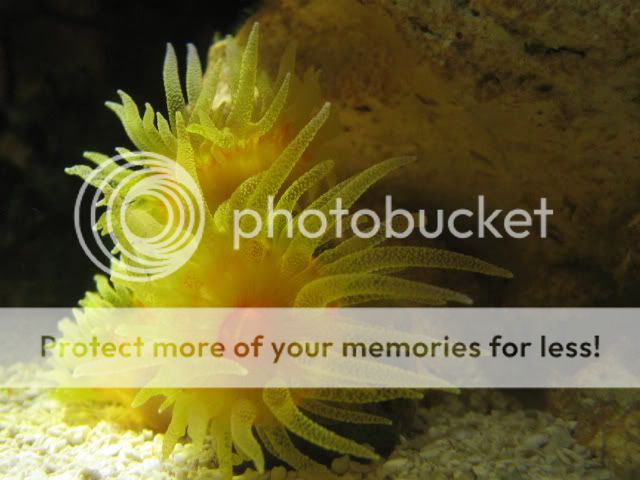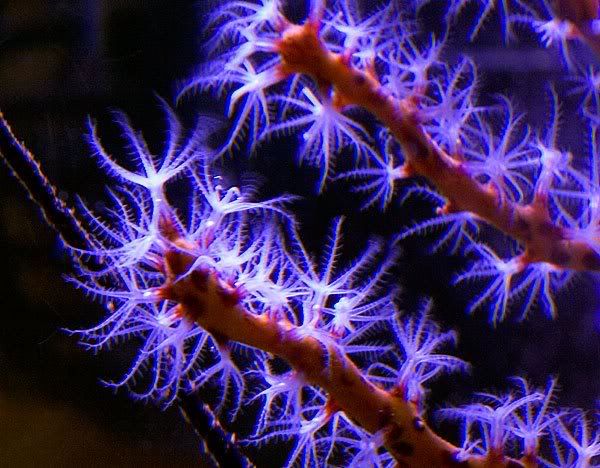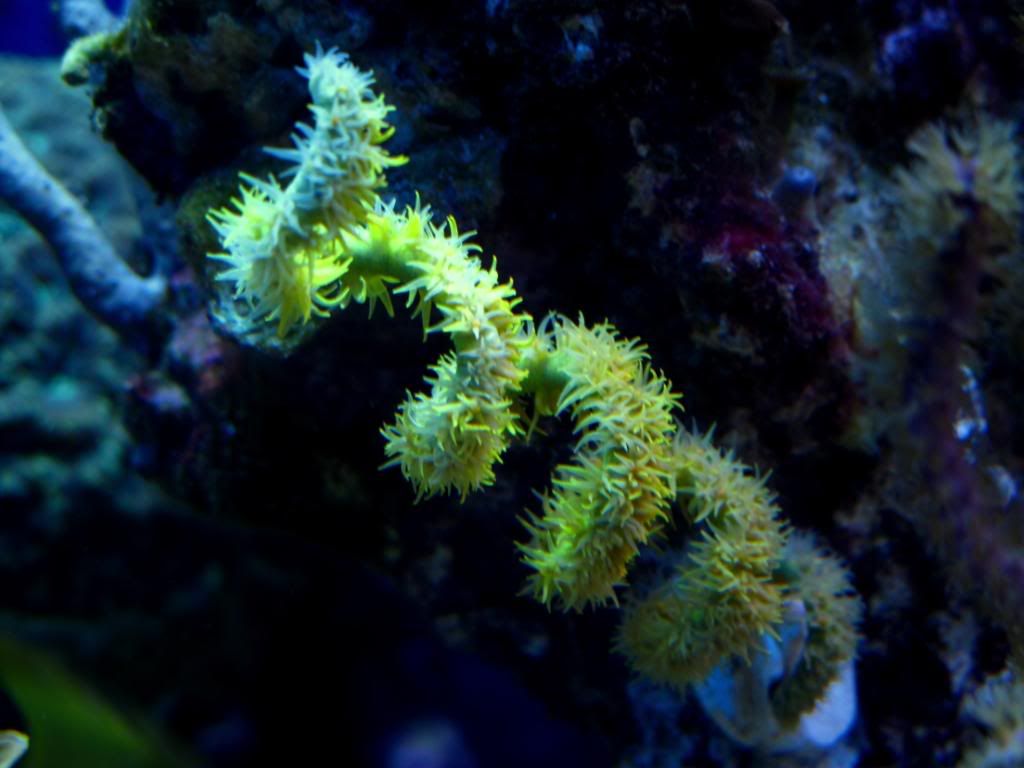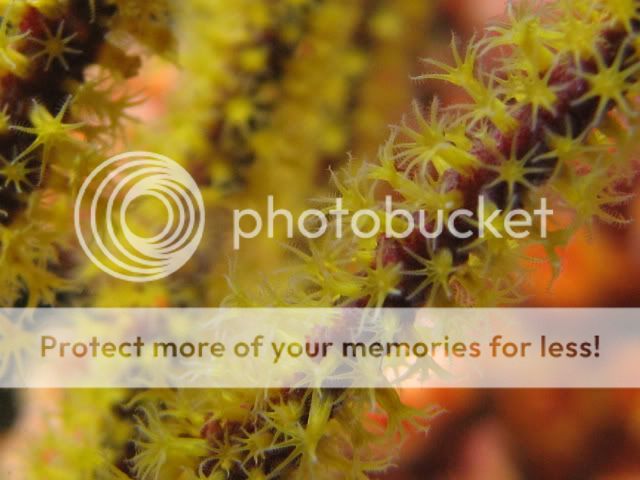


|
 |
|
|
#1 |
|
Registered Member
Join Date: Jan 2005
Location: Yonkers, NY
Posts: 1,581
|
Let's talk about corals to stock in a non-photosynthetic aquarium
As our non-photosynthetic forum continues to grow a common question that is asked is: What kind of non-photosynthetic corals are there and what are their care level. It is our duty as members of this forum to help our community grow and help increase exposure of non-photosynthetic corals to reefkeepers.
Let's make the thread interesting, interactive, and hopefully a little educational in the process. Guidelines:
Now these are just the basics to start with. If you have any recommendations to add, feel free to do so. Mike
__________________
Put down the halide and step into the shade...welcome to the darkside of reefkeeping. FM UltraLith system since 7.3.08 Current Tank Info: 50 gallon rimless non-photosynthetic |
|
|

|
|
|
#2 |
|
Registered Member
Join Date: Nov 2008
Location: Trussville,Al
Posts: 329
|
Should be a great thread Aquabacs !
Looking forward to some good replies as well ! |
|
|

|
|
|
#3 |
|
Registered Member
Join Date: Jan 2005
Location: Yonkers, NY
Posts: 1,581
|
I will start the thread off with Dendrophyllia
 Dendrophyllia sp. Common names: Dendro, Super Sun Coral, Firecracker coral Type of Coral: LPS Care Level: Beginner Reproduction: reproduces by (asexual) budding, (sexual) planula release, can be easily fragged. Coral Placement/Orientation coral in not finicky in placement or with flow, can be glued or epoxied vertically or horizontally Feeding: prefers meaty foods: mysis, prawns, squid, brine shrimp, cyclop-eeze, chopped silversides. Food should be fed directly to the polyp either by feeding tongs or turkey baster daily. Additional tips or words of wisdom Dendrophyllia sp. is a great beginner coral and normally the gateway coral into keeping of non-photosynthetic corals. It is has become easily available to the public, fequent art frag swaps and one of the hardiest non-photosynthetic corals available. Yes, this coral can survive on less than daily feeding but in our aquariums we are looking for more than survival 
__________________
Put down the halide and step into the shade...welcome to the darkside of reefkeeping. FM UltraLith system since 7.3.08 Current Tank Info: 50 gallon rimless non-photosynthetic |
|
|

|
|
|
#4 |
|
Moved On
Join Date: Mar 2010
Posts: 60
|
Name: Tubastraea sp
Common Name: Sun Coral Colors available: Black, Olive, Yellow, Red Reproduction: planula release, budding, easily fragged. Coral Placement: loves flow, can be glued or epxoed vertically or horizontally. Can also be placed in direct light, but lower in the tank. Feeding: Brine, Mysis, Photoplankton, Cyclop-eese, krill, table shrimp-raw-Meaty foods in small bit size pieces. Additional info: This is a very beautiful coral, easy to care for, but should be a decatitated hobbist. Daily feedings will make this coral trive, but keep an eye on nutrient export. Weekly water changes is a must. Last edited by Timeless1483; 04/14/2010 at 10:29 AM. Reason: editing layout |
|
|

|
|
|
#5 |
|
Moved On
Join Date: Mar 2010
Posts: 60
|
Scientific:Rhizotrochus typus
Family: Flabellidae Common:Rhizotrochus typus, Rhizo Colors: White, pink, red, orange, green Reproduction: Budding-They send out tubes from skeleton, and new babies appear. Coral Placement: Can be glued or expoxed to LR, and can be placed in substrate. Like gentle to moderate flow. Feeding: This LPS coral loves Silverside, mysis, krill. Meaty foods. Small daily feeding is good, but will be find with weekly feedings(1 silverside) Additional info: Not a great deal on the net, expensive ($100-$1000), normally from the waters of Japan, but not limited too. It is ok in light, but expands to 5 times it size at night, and after feeding.Rhizotrochus typus is a reef building coral, which has not formed a mutualistic symbiosis with zooxanthellae. Species from the Flabellidae family likely occur up to several kilometers in depth, in the Indo-Pacific region. They feed on plankton, detritus, crustaceans, fish and possibly dissolved organic molecules. R. typus is exported for the aquarium trade. These corals require ample feeding with crustaceans and small fish. Last edited by Timeless1483; 04/14/2010 at 10:41 AM. Reason: add info |
|
|

|
|
|
#6 | |
|
Registered Member
Join Date: Mar 2007
Location: Columbus
Posts: 2,949
|
Quote:

|
|
|
|

|
|
|
#7 |
|
Registered Member
Join Date: Nov 2008
Location: Trussville,Al
Posts: 329
|
Great info guys !
Lets keep them coming. Hopefully , In the end ,someone should publish all the information. As we all know,there are not that many resources . Thanks 
|
|
|

|
|
|
#8 |
|
Registered Member
Join Date: Mar 2007
Location: Columbus
Posts: 2,949
|
 Diodogorgia nodulifera Common names: Yellow or Red Finger Gorgonian Type of Coral: Gorgonian Care Level: Intermediate Reproduction: most likely sexual Coral Placement/Orientation Insensitive to light. Unknown whether laminar flow or turbulent flow yields better results, but I have mine directly in the path of a vortech with flow that would probably stress out high flow loving Acropora corals. Feeding: Zooplankton, eggs/larvae, possibly bacterioplankton and detritus. Food should be no larger than frozen cyclopeeze, with the majority being much smaller such as rotifers. Polyps will retract without constant food in the water. Additional tips or words of wisdom This is a good first gorgonian if you are venturing into an NPS system. They are still difficult relative to most photosynthetic corals. You should feed small amounts as often as possible. A continuous feeding system will yield the best results as the polyps should stay open almost 24/7. If the polyps stay closed most of the time, either you don't have enough flow, enough food in the water or your water quality is too poor. This coral will grow vertically from the tips and "encrust" from the base if it is healthy. It will grow in the direction of the strongest flow and can handle literally being blasted with it. The tissue gets algae and detritus build up easily and should be kept clean (high flow will help a lot). Last edited by uhuru; 04/14/2010 at 04:02 PM. |
|
|

|
|
|
#9 |
|
Registered Member
Join Date: Jan 2005
Location: Yonkers, NY
Posts: 1,581
|
Awesome job guys! Keep them coming.
Timeless1483 dont forget to add pictures of the coral you are speaking of  It will help the reader/reefer connect an image with the information. It will help the reader/reefer connect an image with the information. Mike
__________________
Put down the halide and step into the shade...welcome to the darkside of reefkeeping. FM UltraLith system since 7.3.08 Current Tank Info: 50 gallon rimless non-photosynthetic |
|
|

|
|
|
#10 |
|
Registered Member
Join Date: Nov 2008
Location: Trussville,Al
Posts: 329
|
Great thread !
Anyone with [ waiting on ] Trikentrion flabelliforme /Red Spider Sponge experience ? |
|
|

|
|
|
#11 |
|
Moved On
Join Date: Mar 2010
Posts: 60
|
scientific name: Alcyonium species-Shili Sponge
[IM  Common name: Chili Sponge, Strawberry Coral, Encrusting Leather Coral and Red Finger. Type of Coral: Soft Coral Reproduction: Budding Coral Placement: loves flow, can be stuck between rock, or glued if attached to piece of LR. Vertical or horizontal. Best place is in shaded area, but can tolerate the light at bottom of tank. Feeding: Brine, Zooplankton, DT, Cyclop-ezze. Additional info: Chili Coral grows to a maximum of six inches in length. Chili Coral may be found in purple, yellow, orange and red colored varieties. Some what difficult to keep, requires food a few times a day, will stay open most of the day. Last edited by Timeless1483; 04/14/2010 at 05:01 PM. Reason: links |
|
|

|
|
|
#12 | |
|
Moved On
Join Date: Mar 2010
Posts: 60
|
Quote:
|
|
|
|

|
|
|
#13 | |
|
Moved On
Join Date: Mar 2010
Posts: 60
|
Quote:
|
|
|
|

|
|
|
#14 |
|
Registered Member
Join Date: Jan 2005
Location: Yonkers, NY
Posts: 1,581
|
Now that's what I am talking about!
__________________
Put down the halide and step into the shade...welcome to the darkside of reefkeeping. FM UltraLith system since 7.3.08 Current Tank Info: 50 gallon rimless non-photosynthetic |
|
|

|
|
|
#15 |
|
Registered Member
Join Date: Jan 2004
Location: Farmington Hills, Michigan
Posts: 1,791
|
I'll jump in with this:
 Family Name:Cirrhipathes spiralis Common name: Wire coral, Spiral coral Type Of Coral: Black Coral Reproduction: Cuttings, the rest is unknown Coral Placement: Prefers lots of flow, doesn't care about lighting. Cuttings can be epoxied to a structure piece. Feeding: Eats just about anything. Seems to love cyclops and mysis. Additional: Appears to be a great beginner coral. It is relatively new to the aquarium world so not a lot of information out there. I feed mine 3 to 4 times a week directly and it is always grabbing anything that floats by. In nature they are found in deep waters. They grow everywhere conditions are right from Florida to the indo pacific. The indo ones seem to have the best color. Ranging from purples to blues to yellow to a combination of all of the above. Used and sort after in Asian cultures and for jewelry. The calcium structure left behind in death is a hard black skeleton. It can be polished to a shinny black stone. Last edited by slapshot; 04/14/2010 at 07:53 PM. |
|
|

|
|
|
#16 |
|
Moved On
Join Date: Mar 2010
Posts: 60
|
 Coral: Balanophyllia elegans Common:Balanophyllia, orange cup coral, orange coral Reproduction: Sexes are separate. The eggs are fertilized inside the mother's gastrovascular cavity and develop to planula larvae there. Planulae larvae usually settle within 10 cm of the parent Coral Placement: Can be glued or expoxed to LR, likes moderate to fast flow. Feeding: brine, zooplakton, mysis, Meaty foods. Additional info:This coral catches prey primarily by nematocysts and spirocysts on its tentacles, but may open its mouth widely and capture some prey with the mesenteries inside its gastrovascular cavity . This species is known to be able to absorb dissolved organic carbon from the water. The polyps of this coral are solitary. |
|
|

|
|
|
#17 |
|
now is the time
Join Date: Nov 2007
Location: chattanooga tn
Posts: 1,097
|
Thanks every one! This is going to help a lot of us that are trying to learn more about NPS. Also save you from answering the same questions over & over. Thanks & keep up the good work!
|
|
|

|
|
|
#18 |
|
Moved On
Join Date: Apr 2010
Posts: 78
|
Boy these look interesting, thinking of starting some myself~
Are these then probably the best for those with only natural lighting? (don't have any lighting, just the 3 gigantic windows in my apartment that let in TONS of sun all day long) thanks 
|
|
|

|
|
|
#19 |
|
Registered Member
Join Date: Jan 2009
Location: Northern Ireland
Posts: 75
|
wow what an amazing thread thanks everyone
__________________
stephen |
|
|

|
|
|
#20 |
|
Registered Member
 Join Date: Jun 2000
Location: Hattiesburg, MS
Posts: 18,271
|
Thread stuck to the top!!!!
__________________
Skip Attix Former Editor of Reefkeeping Magazine |
|
|

|
|
|
#21 |
|
Registered Member
Join Date: Jan 2005
Location: Yonkers, NY
Posts: 1,581
|
Thanks for your help Skip. You rock!
Mike
__________________
Put down the halide and step into the shade...welcome to the darkside of reefkeeping. FM UltraLith system since 7.3.08 Current Tank Info: 50 gallon rimless non-photosynthetic |
|
|

|
|
|
#22 |
|
Registered Member
Join Date: Jan 2005
Location: Yonkers, NY
Posts: 1,581
|
 Menella sp. Common names: Menella Gorgonian, Golden Sea Rod Note: coral also comes in blue and brown variations Blue Sea Rod Type of Coral: Gorgonian Care Level: Intermediate Reproduction: most likely sexual, can be fragged Coral Placement/Orientation: Insensitive to light. Coral in not finicky in placement, does well in laminar flow or turbulent flow, can be glued or epoxied vertically or horizontally Feeding: Gorgonians are suspension feeders that filter small food particles from the water column: zooplankton, eggs/larvae, possibly bacterioplankton and detritus. Food should be no larger than frozen cyclop-eeze, with the majority being much smaller such as rotifers. Polyps will retract without constant food in the water. Additional tips or words of wisdom This large polyp species of gorgonian is one of the more easier species of non-photosynthetic gorgonians to keep. They are still difficult relative to most photosynthetic corals and should be attempted once Beginner non-photosynthetic corals have been able to be sustained in the aquarium for a period of time. You should feed small amounts as often as possible. A continuous feeding system (dry or liquid) will yield the best results as the polyps should stay open almost 24/7. If the polyps stay closed most of the time, either you don't have enough flow, enough food in the water or your water quality is too poor. This coral will grow vertically from the tips and "encrust" from the base if it is healthy. It will grow in the direction of the strongest flow and can handle literally being blasted with it. The tissue gets algae and detritus build up easily and should be kept clean (high flow will help a lot). Note: Coral can "wax over" and shed. While this process is occurring, polyps will not expand. The process can be assisted by using a turkey baster to gently remove the "waxed over" coating. Coral will have a "new" appearance after this takes place.
__________________
Put down the halide and step into the shade...welcome to the darkside of reefkeeping. FM UltraLith system since 7.3.08 Current Tank Info: 50 gallon rimless non-photosynthetic |
|
|

|
|
|
#23 |
|
Registered Member
Join Date: Jan 2005
Location: Yonkers, NY
Posts: 1,581
|
 Astrogorgia sp. Common names: Astrogorgia Sea Fan, Astro Sea Fan Type of Coral: Gorgonian Care Level: Advanced Reproduction: most likely sexual, can be fragged Coral Placement/Orientation: Insensitive to light. Coral in not finicky in placement, does well in laminar flow or turbulent flow, can be glued or epoxied vertically or horizontally Feeding: Gorgonians are suspension feeders that filter small food particles from the water column: zooplankton, eggs/larvae, possibly bacterioplankton and detritus. Food should be no larger than frozen cyclop-eeze, with the majority being much smaller such as rotifers. Polyps will retract without constant food in the water. Additional tips or words of wisdom This non-photosynthetic gorgonian is one of the more difficult species to keep. Should be attempted once Intermediate non-photosynthetic gorgonians have been able to be sustained in the aquarium for a period of time. You should feed small amounts as often as possible. A continuous feeding system (dry or liquid) will yield the best results as the polyps should stay open almost 24/7. If the polyps stay closed most of the time, either you don't have enough flow, enough food in the water or your water quality is too poor. This coral will grow vertically from the tips and "encrust" from the base if it is healthy. It will grow in the direction of the strongest flow and can handle literally being blasted with it. The tissue gets algae and detritus build up easily and should be kept clean (high flow will help a lot). Note: Coral can "wax over" and shed. While this process is occurring, polyps will not expand. The process can be assisted by using a turkey baster to gently remove the "waxed over" coating. Coral will have a "new" appearance after this takes place.
__________________
Put down the halide and step into the shade...welcome to the darkside of reefkeeping. FM UltraLith system since 7.3.08 Current Tank Info: 50 gallon rimless non-photosynthetic |
|
|

|
|
|
#24 |
|
Registered Member
Join Date: Nov 2008
Location: Trussville,Al
Posts: 329
|
 Great additions to the thread Mike ! Also congratulations ,you just got the first NPS sticky !  David |
|
|

|
|
|
#25 |
|
Moved On
Join Date: Mar 2010
Posts: 60
|
Ptilosarcus gurneyi
 Common Name: Sea Pen Type of coral: Octocorals, soft coral, Sea whip family. Care: Advanced Coral Placement: Bottom, no light requirements, place in substrate-root like structure. Feeding:Filter feeder. Phytoplakton, zooplakton, ect. Additional info: sea pens are colonial animals with multiple polyps ,a sea pen's polyps are specialized to specific functions. Normally found in 10+ m deep waters, low flow areas.Their primary predators are nudibranchs and sea stars, some of which feed exclusively on sea pens. When touched, sea pens emit a bright greenish light; this is known as bioluminescence. |
|
|

|
 |
| Tags |
| azoo, azoox, azooxanthellae, non-photosynthetic, nps |
|
|